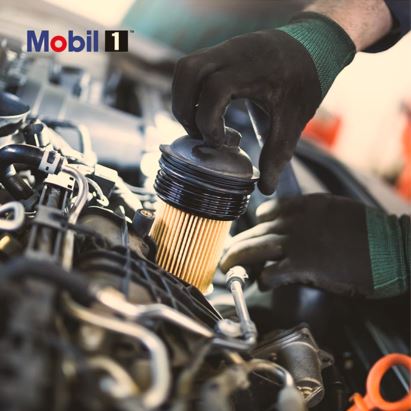How to change your oil and oil filter

One of the most important things you can do to keep your car in the best condition possible is to change your engine oil and filter. Oil in a car is like blood in our bodies – it flows throughout the car’s engine and help keeps everything running smoothly. Frequent oil and filter changes are essential in helping your car and its performance.
Car maintenance equipment
Before you open the bonnet and tackle this task, make sure you have all the necessary supplies and equipment. Here’s the equipment you’ll need:
- The proper amount and grade of engine oil – find out which oil is suitable for your car
- A high-quality oil filter – see your owner’s manual for requirements.
- A socket wrench
- An oil filter wrench
- A funnel
- Something to catch the old engine oil, such as an oil pan or bucket
- Rags
Step-by-step guide to change your oil
- Before draining the engine oil, start your car and let it run for a minute or two, or take it for a quick drive around the block; this will warm up the engine oil and allow it to drain out smoothly. Next, be sure you have a safe area to do your oil change – a driveway or garage will work well, and level ground is a must.
- Under the vehicle, locate the oil pan and drain plug. Please be aware that the engine may be warm. Ensure that the engine is cool enough to touch before attempting to locate the drain plug.
- You may have to jack up the car to get beneath it. Remember: Never get underneath a car supported only by a jack; always use a jack stand.
- Once you identify the drain plug, spread the newspaper out and place the oil pan below. Loosen the drain plug with the socket wrench, turning it anticlockwise.
- After loosening, remove the plug slowly by hand and let the engine oil drain out. Caution: The engine oil may be hot. Once the oil stream slows to a drip, reinstall the drain plug by hand and tighten it with a quarter turn clockwise with the wrench.
- Keep the oil drain pan underneath the car and locate the oil filter.
- Loosen it with the filter wrench, turning it anticlockwise. Remove the oil filter by hand.
- Before installing the new oil filter, apply a little engine oil to the new gasket. This will prevent the gasket from sticking, cracking or causing an oil leak.
- Finally, install and tighten the new oil filter by hand.
It's now time to fill the engine with new engine oil. Find out which oil is right for your vehicle with our product selector. Keep in mind that the engine oil you use should be the recommended grade and amount as identified earlier in the owner’s manual.
- Loosen the oil-filler cap and pour your engine oil into the tank. Using a funnel will help you avoid spilling. When finished, replace the oil cap and wipe away any spilled engine oil. Start your engine and run it for a minute to allow the new engine oil to circulate thoroughly.
- You're almost done. But don't drive off yet, because you need to check the oil level. To do this, turn off the car and remove and clean the dipstick.
- Insert and remove it once more, this time checking that the oil has the correct reading. Screw the cap back on and give yourself a pat on the back.
*Please note – The information on how to change your oil and oil filter is provided for informational purposes only. ExxonMobil accepts no responsibility for any damage caused by changing the oil and oil filter on your vehicle. It is the user’s sole responsibility to ensure that the oil and oil filter change is carried out correctly.
- Pour the old engine oil from the pan into a used oil container and place the old oil filter in a plastic bag.
- The best way to dispose of engine oil is to recycle it. Some service stations will accept used engine oil and used oil filters at no charge.
- Finally, dispose of the oily rags responsibly, ensuring that this is done responsibly in accordance to applicable legislation. You and your set of wheels are now good to go.
- Write down the date you performed the oil change and the amount of miles the car had so you know when your next change is due. Don't forget to change your engine oil on a regular basis.

